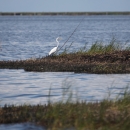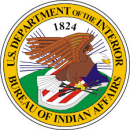The St. Louis River flows through northeastern Minnesota, with the lower portion forming the State boundary with Wisconsin before discharging to Lake Superior between the Twin Ports of Duluth, Minnesota and Superior, Wisconsin. This lower part of the St. Louis River is often referred to as the St. Louis River estuary, and has been influenced by a century of industrial activity. Through corrective environmental actions such as improved sewage treatment, stormwater management, and remediation of historically contaminated sites; and, through ecological restoration efforts guided by the Lower St. Louis River Habitat Plan, the St. Louis River estuary is on the road to recovery and provides significant natural resource opportunities.
Two distinct areas of the St. Louis River estuary were designated together as a Superfund site in 1983 by the United States Environmental Protection Agency - the SLRIDT Site and the US Steel Corporation (US Steel) Site. This natural resource damage assessment and restoration (NRDAR) case focuses on the SLRIDT portion of the St. Louis River Superfund site.
Natural resources (e.g., surface water, sediments, invertebrates, fish, amphibians, reptiles, birds, and mammals) at the SLRIDT Site were exposed to, and adversely affected by, releases of hazardous substances (primarily polycyclic aromatic hydrocarbons, or PAHs) from the Site. Remediation of sediment contamination at the SLRIDT Site was completed in 2011; monitoring and corrective actions (as necessary) are in progress. While remediation removes or reduces the risks of hazardous substances to people and the environment to acceptable levels, restoration seeks to compensate the public for losses of natural resources and their uses. Restoration compensation typically takes the form of habitat enhancement and/or protection, outdoor recreational projects, or other efforts designed to address the same types of natural resources and related services that were impacted.
“Natural resource trustees” are designated and provided authority to restore natural resources injured by hazardous substances. At the SLRIDT Site, the natural resource trustees include: the U.S. Department of the Interior (Fish and Wildlife Service, Bureau of Indian Affairs), the U.S. Department of Commerce (National Oceanic and Atmospheric Administration), the Minnesota Department of Natural Resources, the Minnesota Pollution Control Agency, the Fond du Lac Band of Lake Superior Chippewa, the 1854 Treaty Authority (governed by the Bois Forte and Grand Portage Bands of Lake Superior Chippewa), and the Wisconsin Department of Natural Resources.
In a settlement with XIK, LLC, Domtar, Inc., and Honeywell International, Inc., the trustees received approximately $6,500,000 for the restoration of natural resources and services injured by hazardous substances released in and around the SLRIDT site and approximately $1,700,000 for past natural resource damage assessment costs. In the Final RP/EA, the trustees selected 3 restoration projects for implementation: (1) enhancement/restoration of the shallow sheltered embayment at Kingsbury Bay, which includes recreational access and cultural education opportunities (approximately $5,500,000); (2) watershed protection at Kingsbury Creek (approximately $640,000); and (3) wild rice restoration in the St. Louis River estuary (approximately $360,000).
The trustees are now working with many partners and the public to implement these restoration projects in coordination with other conservation, outdoor recreation, and natural resource-based redevelopment efforts along the Lower St. Louis River. Please check back here for updates as these efforts continue.
The U.S. Fish and Wildlife Service is in the process of updating webpages, so some content that was previously available is temporarily unavailable. Please contact Reena Bowman for additional information.









